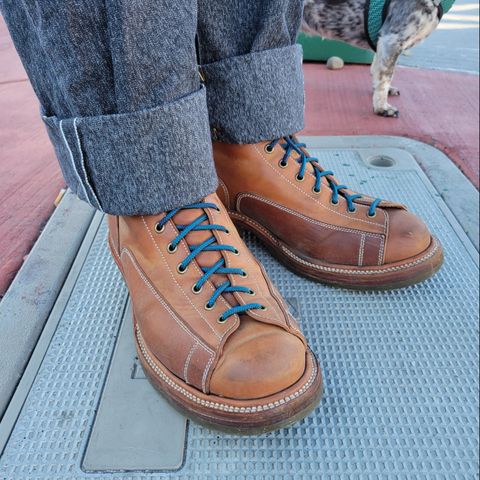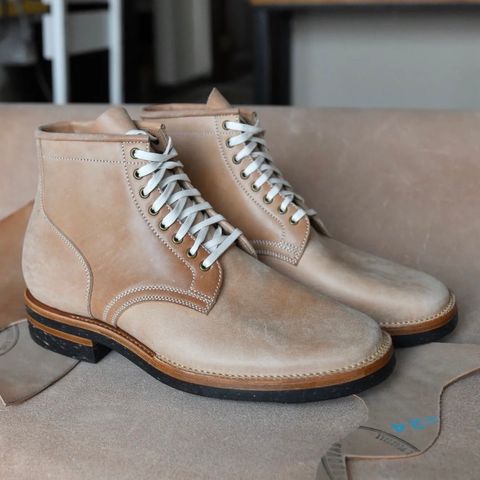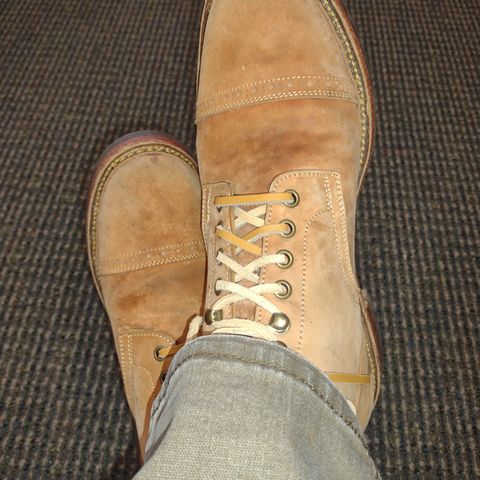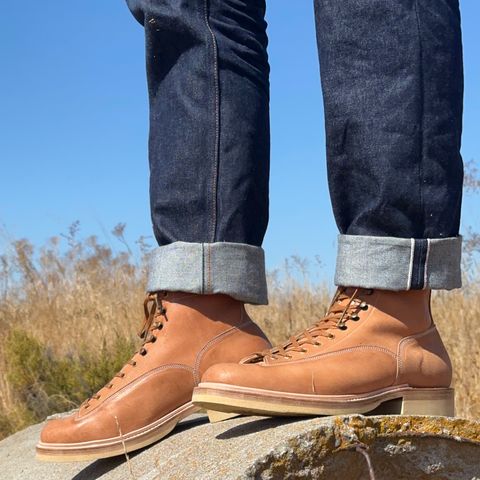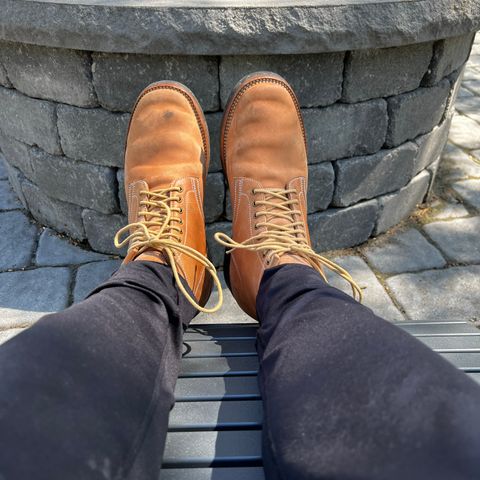About
Conceria Cloe Crust Shell Cordovan is an unglazed variation of shell cordovan leather produced by the Italian tannery Conceria Cloe. The term "crust" refers to vegetable-tanned shell cordovan that has not undergone the final glazing process, resulting in a matte, natural finish distinct from traditional glazed shell cordovan's glossy appearance. This unglazed leather offers heritage footwear enthusiasts an alternative aesthetic characterized by its natural surface texture and accelerated patina development.
About
Conceria Cloe Crust Shell Cordovan is an unglazed variation of shell cordovan leather produced by the Italian tannery Conceria Cloe. The term "crust" refers to vegetable-tanned shell cordovan that has not undergone the final glazing process, resulting in a matte, natural finish distinct from traditional glazed shell cordovan's glossy appearance. This unglazed leather offers heritage footwear enthusiasts an alternative aesthetic characterized by its natural surface texture and accelerated patina development.
Shell cordovan originates from a fibrous flat muscle beneath the rump of the horse and requires over six months of vegetable tanning to complete. The dense, tight fibers characteristic of shell cordovan provide exceptional durability and water resistance while creating the material's signature rolling effect rather than creasing. One horse hide yields only two small oval pieces of cordovan, making it one of the world's rarest leather types.
Production process
Conceria Cloe's crust shell cordovan follows the same extensive tanning steps as glazed variations, using centuries-old vegetable tanning techniques that take a full six months to complete. The leather undergoes traditional pit tanning methods characteristic of Tuscan leather production. The key distinction occurs at the final stage: crust shell cordovan skips the glazing jack machine process, which would otherwise rub a glass rod back and forth quickly with significant pressure to create a glossy, glazed finish. This omission leaves the leather with its natural, unfinished surface intact.
The resulting leather typically measures 4.0oz (1.6mm) in thickness and exhibits a polished luster despite the absence of mechanical glazing. The vegetable tanning process using natural tannins imparts a subtle waxy feel to the surface while maintaining the dense fiber structure inherent to shell cordovan.
Characteristics and appearance
Unglazed shell cordovan presents a matte and flat appearance compared to the shiny, glossy finish of glazed shell cordovan. The natural surface reveals more of the leather's inherent character, including subtle variations in color and texture. Despite lacking mechanical glazing, crust shell cordovan maintains a polished luster with a subtle waxy feel characteristic of vegetable-tanned equine leather.
The dense, tight fibers of shell cordovan remain present regardless of finishing method, providing the material's exceptional ability to withstand everyday wear and tear. The leather exhibits the same tendency to roll rather than crease that defines all shell cordovan types, though unglazed variants tend to produce slightly sharper rolls than traditional glazed shell cordovan.
Aging and patina development
Unglazed shell cordovan tends to age and develop patina more quickly than glazed variants. The absence of the protective glazed layer allows the leather to interact more directly with handling, oils, and environmental exposure. Over time with regular use, the originally matte surface darkens and begins to develop a more glazed appearance naturally through the accumulation of oils and the compression of the leather's surface fibers.
This natural aging process can be accelerated through maintenance. Application of Venetian leather balm followed by vigorous horsehair brushing can impart a glazed appearance to previously unglazed cordovan, demonstrating the surface-level nature of the finish distinction. The leather's ability to develop and maintain a lustrous patina over time represents one of shell cordovan's most valued characteristics among heritage footwear collectors and enthusiasts.
References
"Horween Unglazed vs. Glazed Shell Cordovan - Aging and Patina". Guarded Goods. Retrieved October 24, 2025.
"Shell Cordovan Information". Guarded Goods. Retrieved October 24, 2025.
"Rocado Unglazed Shell Cordovan - Veg Tanned (Crust)". Rocky Mountain Leather Supply. Retrieved October 24, 2025.
